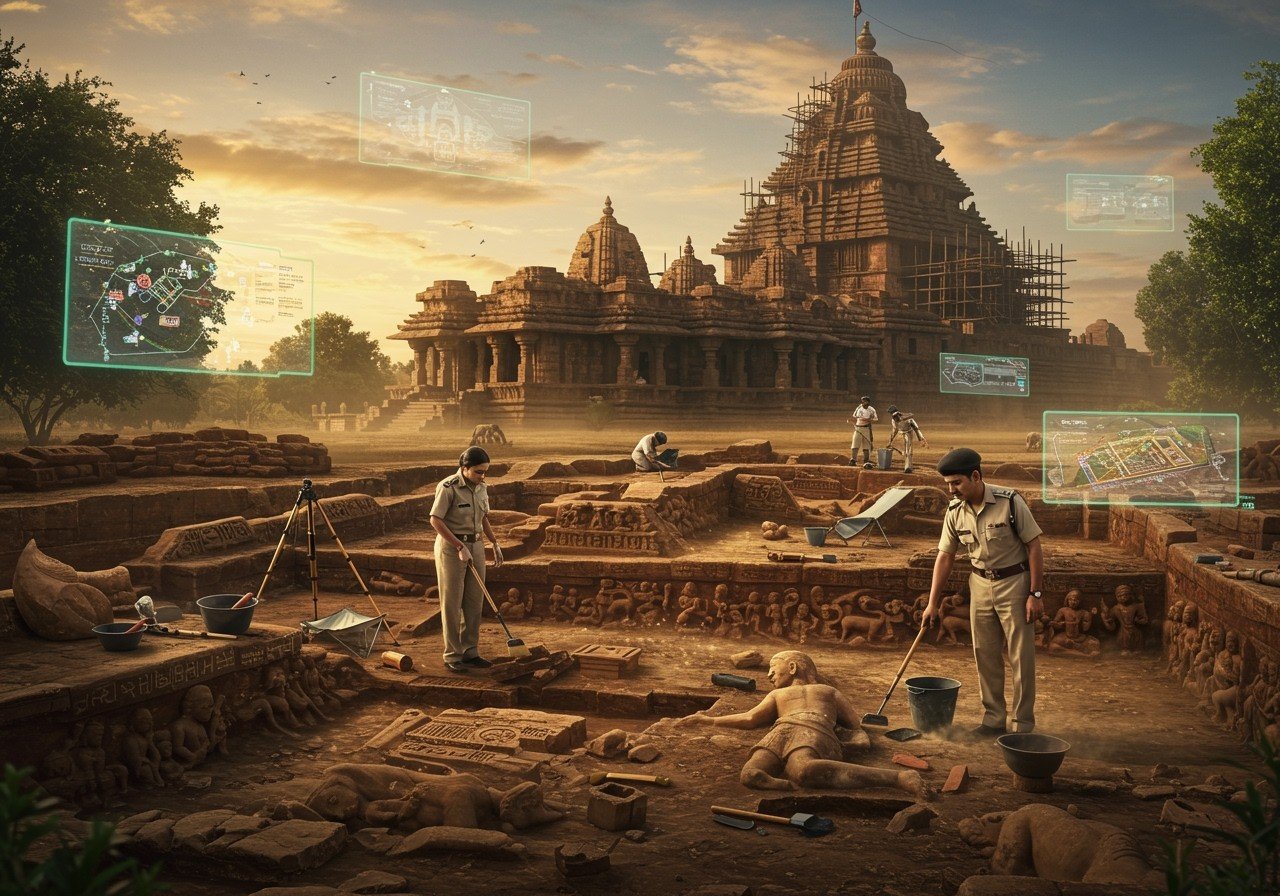
The Archaeological Survey of India (ASI), established in 1861 by Alexander Cunningham, stands as a beacon of archaeological research and cultural heritage preservation in India. This institution plays a vital role in uncovering India’s rich past, safeguarding its monuments, and promoting an understanding of the nation’s diverse history. From the ancient cities of the Indus Valley Civilization to the majestic temples and stupas of later eras, the ASI’s work illuminates the tapestry of India’s past.
Understanding the ASI’s Role
The ASI, operating under the Ministry of Culture, is the premier organization for archaeological research and protection of cultural heritage in India. It conducts archaeological excavations across the country, collaborating with various state departments, universities, and research organizations. The ASI provides detailed reports on various excavation sites, contributing significantly to our knowledge of India’s past.
Key Responsibilities:
- Surveying and Excavating: The ASI meticulously surveys and excavates archaeological sites, employing techniques like aerial photography and ground-penetrating radar to uncover hidden remnants of ancient civilizations. These efforts have led to remarkable discoveries, shedding light on ancient urban planning, religious practices, and artistic traditions. They also work with stratigraphic analysis and trench cutting methods.
- Preserving Monuments: The ASI is committed to the conservation and restoration of historical monuments. It works to protect these sites from the ravages of time and the impacts of urbanization, ensuring that they remain accessible to future generations. The ASI regulates construction around protected sites to prevent damage and employs expert teams to restore and maintain the structural integrity of these historical treasures. They manage important sites like the Taj Mahal and Red Fort.
- Research and Documentation: The ASI meticulously documents and catalogs artifacts unearthed during excavations. These artifacts provide invaluable insights into the daily lives, beliefs, and artistic expressions of ancient cultures. The ASI’s research and publications contribute significantly to the field of archaeology and enhance our understanding of India’s historical narrative.
A Historical Overview of the ASI
Since its inception in 1861, the ASI has witnessed significant milestones, including the discovery of Harappan civilization sites and contributions from prominent archaeologists like John Marshall and Mortimer Wheeler. The Asiatic Society, established in 1784 by Sir William Jones in Calcutta, also played a pivotal role in early systematic research into the subcontinent’s history. The ASI has evolved its methodologies over time, particularly after India’s independence, refining its approach to archaeological research and preservation.
Notable Excavations and Discoveries
The ASI’s excavations have unveiled remarkable aspects of India’s past. Some notable discoveries include:
- Indus Valley Civilization Sites (Harappa and Mohenjo-daro): Unearthing evidence of sophisticated urban planning, drainage systems, and intricate artifacts that showcase the advanced nature of this ancient civilization. These discoveries revolutionized our understanding of early urban development in the Indian subcontinent.
- Ancient Buddhist Stupas (Sanchi and Amaravati): Revealing exquisite examples of Buddhist art and architecture, reflecting the spread of Buddhism and its influence on artistic traditions. The intricate carvings and sculptures at these sites offer glimpses into the religious and artistic practices of ancient Buddhist communities.
- Ashokan Edicts: Deciphering inscriptions that provide invaluable insights into the reign of Emperor Ashoka, his policies, and his embrace of Buddhist principles. These edicts offer a unique window into the governance and philosophy of a pivotal period in Indian history.
- Kalibangan: Uncovering evidence of early urban planning and settlement patterns, contributing to our understanding of the development of urban centers in ancient India. The findings at Kalibangan provide valuable information about the organization and structure of early Indian cities.
- Hampi: Exploring the architectural marvels of the Vijayanagara Empire, showcasing the grandeur and artistic achievements of this historical kingdom. The intricate temples, palaces, and sculptures at Hampi stand as testaments to the empire’s rich cultural heritage.
- Lothal: Discovering an ancient dockyard, providing evidence of advanced maritime trade practices and connections with other civilizations. The findings at Lothal shed light on the maritime history of ancient India and its engagement in international trade networks.
Poojn.in: Connecting You with India’s Cultural Heritage
For those captivated by India’s rich history and the discoveries of the ASI, Poojn.in offers a unique opportunity to connect with the nation’s cultural heritage. We provide a wide selection of authentic puja items, handcrafted by skilled artisans using traditional methods.
- Explore traditional copper and brass items reminiscent of ancient artifacts, allowing you to bring a touch of history into your home.
- Discover ritual items that reflect the historical practices documented by the ASI, deepening your connection to India’s rich traditions. Browse our collection of Pooja Asans.
- Find sacred items crafted with age-old techniques, supporting the preservation of traditional craftsmanship that the ASI works to protect. Check out our range of Idols and Murtis.
Visit Poojn.in today to explore our collection and support the preservation of India’s cultural legacy. You can also find products like Ashoka Chal Powder and Arjun Chal Powder.
Further Exploration
Delve deeper into the fascinating world of Indian archaeology and history with these insightful blog posts:
- Andhra Pradesh Coastal Temples: A Sacred Journey
- Sirpur: A Journey Through History, Culture, and Monuments
- Leaning Temple of Huma: History, Architecture, and Mystery
- Odisha’s Sacred Sites: A Journey Through Spirituality and History
The Future of ASI
The ASI continues to evolve, embracing new technologies and fostering collaborations to enhance its preservation efforts. Its ongoing work ensures that the stories of India’s past continue to inspire and inform future generations.


